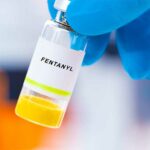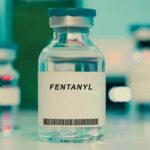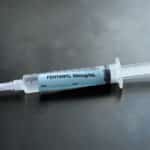Unfortunately, the synthetic opioid fentanyl does not have any distinctive smell, taste, or appearance. Identifying fentanyl in street drugs can only be accomplished by using fentanyl test strips.
Identifying Fentanyl Medications
Pharmaceutical fentanyl is produced in several formulations for medical use, as the drug is a leading treatment for both severe pain and chronic pain.
Each type of fentanyl is clearly marked and documented and can include:
- transdermal skin patches
- sublingual tablets
- sublingual sprays
- transmucosal lozenges or lollipops
- buccal tablets
- injection formulations
- buccal soluble films
- nasal sprays
Identifying Illicit Fentanyl
There is no method for identifying fentanyl in an unknown substance through taste, touch, smell, or feel. However, fentanyl test strips have been made available in the United States as a harm reduction measure.
Fentanyl Test Strips
Fentanyl test strips allow those who use drugs recreationally to test for the presence of fentanyl before taking a particular substance. They are considered to be very reliable indicators and can be purchased online or over the counter.
Forms Of Illicit Fentanyl
Fentanyl is produced illegally and imported to the United States in a wide variety of different forms. This illegal drug flow has led to fentanyl being the single most deadly illicit drug in the United States, with a majority of all opioid-related overdose deaths involving fentanyl.
Because fentanyl is produced in so many forms drug dealers may not even be aware they are selling it. These forms have included:
- a white powder similar the illicit drug heroin, usually cut with other household white powders
- unlabeled pills, capsules, tablets, and nasal sprays
- counterfeit pills or tablets that imitate prescription drugs, especially other opiate/opioid drugs like oxycodone (Oxycontin)
- adulterated products containing other illicit drugs like heroin or methamphetamine
Fentanyl Overdose: Risks & Responses
Despite numerous changes to national and state drug policy, over 68,000 Americans died from opioid overdoses in 2020. Illicit fentanyl has been linked to the majority of these deaths.
A variety of different situations can increase a person’s risk of overdose, including errors in dosing, changes in drug supply, changes in tolerance, and use of fentanyl with other drugs.
When a fentanyl overdose occurs, symptoms can include cold and clammy skin, bluish lips or fingernails, and sudden breathing difficulites.
Although fentanyl overdoses can be lethal, there are simple, life-saving steps you can use to respond if an overdose does occur.
Administer Narcan (Naloxone)
Naloxone is a powerful opioid antidote medication sold over the counter as a nasal spray and carried by emergency personnel. Naloxone works to clear and block opioid receptors in a person’s body and brain, rapidly reversing opioid overdose symptoms.
Call Local Emergency Services
Call 911 as soon as possible and provide first responders with all the information you can. These emergency healthcare providers will attempt to resuscitate and stabilize the victim using naloxone, breathing support, life support, and other emergency interventions as needed.
Fentanyl Addiction Treatment
A variety of professional addiction treatment options have been developed to help address substance use disorder and reduce the risk of opioid overdose, including:
- medical detox and tapering
- inpatient and outpatient treatment
- behavioral therapies, including cognitive behavioral therapy (CBT)
- medication-assisted treatment programs (MAT)
- group and individual counseling
- peer support groups
- aftercare support
If you or a loved one struggles with drug addiction, please contact Northeast Addictions Treatment Center today.
Sources
- Drug Enforcement Administration — Fentanyl
- National Institute on Drug Abuse (NIDA) — Fentanyl DrugFacts
- National Library of Medicine: MedlinePlus — Fentanyl
- Substance Abuse and Mental Health Services Administration (SAMHSA) — Opioid Overdose Prevention Toolkit, Five Essential Steps for First Responders
Written by
Northeast Addition Editorial Team
©2024 Northeast Addition Center | All Rights Reserved
This page does not provide medical advice.



